- Products
- Solutions
- Service
- Company
MiniTec also relies on state-of-the-art technology in the warehouse area. A driverless transport system has been in use for some time. It is an integral part of the intralogistics and supports the employees in various procedures and processes.
Today, automated guided vehicles (AGVs) are increasingly used in companies to autonomously transport goods and materials from one place to another. The use of driverless transport systems is particularly attractive for companies because they are usually easy to integrate into the company's own road network and because the goods are transported primarily independently of people. MiniTec also relies on this technology.
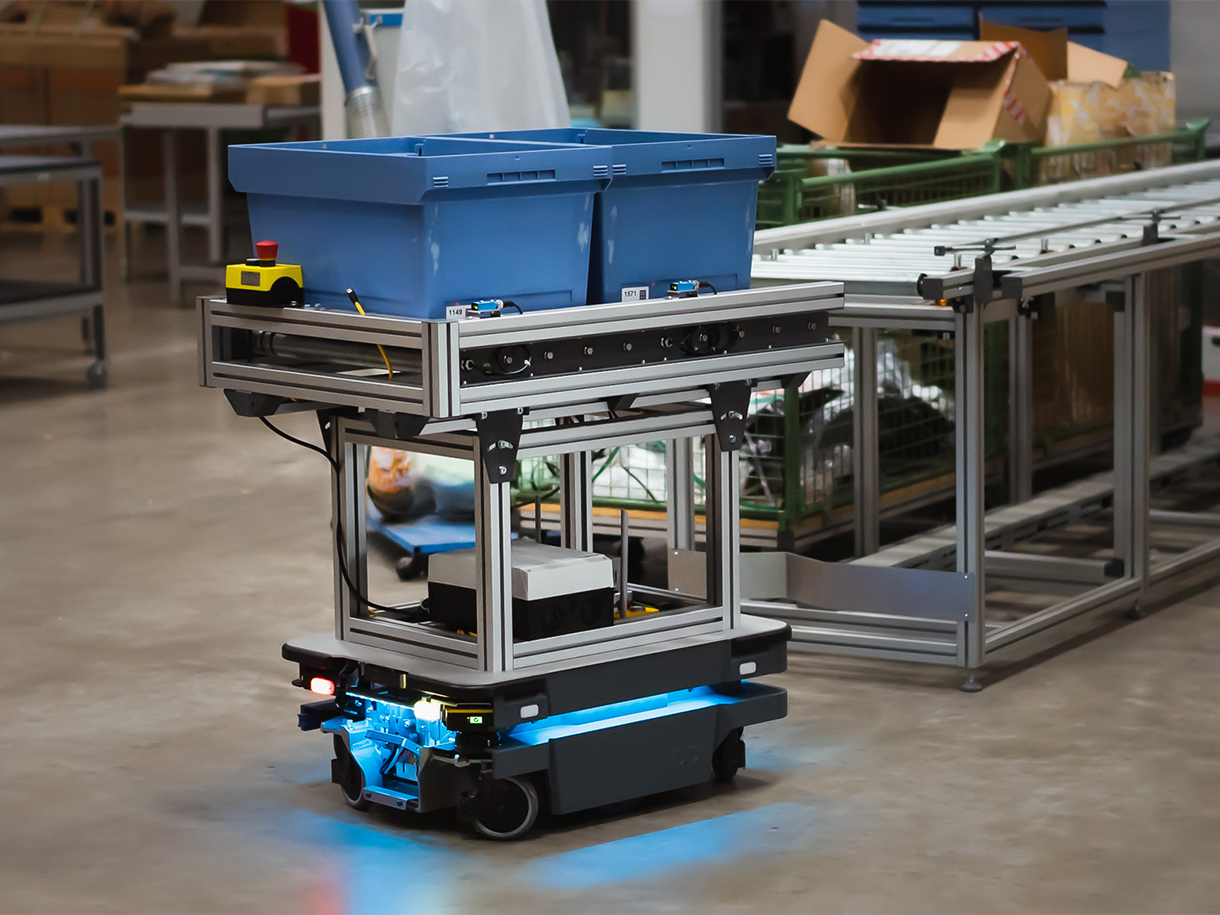
Driverless transport systems can be divided into two different systems: On the one hand, there are Automated Guided Vehicles (AGVs for short). These drive automatically to the desired areas, but they follow predefined routes. The routes are determined, for example, by floor markings, magnetic loops in the floor or by specifications in the software.
On the other hand, there are the autonomous mobile robots (AMR for short). These are equipped with sufficient sensor technology to find their way even in demanding environments. As a result, they do not need any fixed paths, but can move freely on the basis of a pre-learned map. All that is needed is the specification of a target position and the robot calculates its own path. It can react flexibly to obstacles in its path and find its own alternative routes.
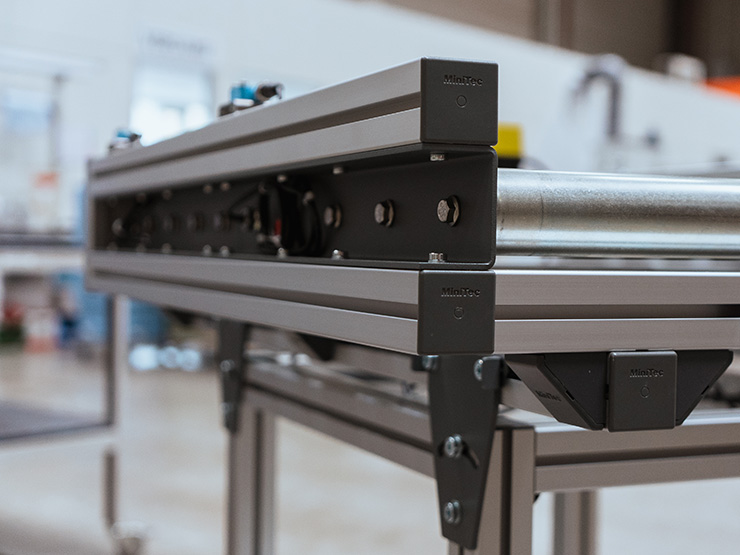
For MiniTec, flexibility was the decisive reason for choosing an AMR system. After comparing several models, the robots from Mobile Industrial Solutions (MiR 200 series) were tested more closely. The good navigation and simple commissioning were particularly convincing, so that a robot was ordered shortly after the test phase.
To gain more experience with the system, the AGV was tested in different scenarios. It became clear that the full potential of the robot only unfolds in interaction with the MiniTec conveyor technology. This is how the MiR 200 found its way into the trade fair model of a battery automation system. Here, battery modules are assembled in a combination of MiniTec multi-axis handling and conveyor technology. In this process, the AGV takes over the loading of the system with raw parts and the removal of the finished product.
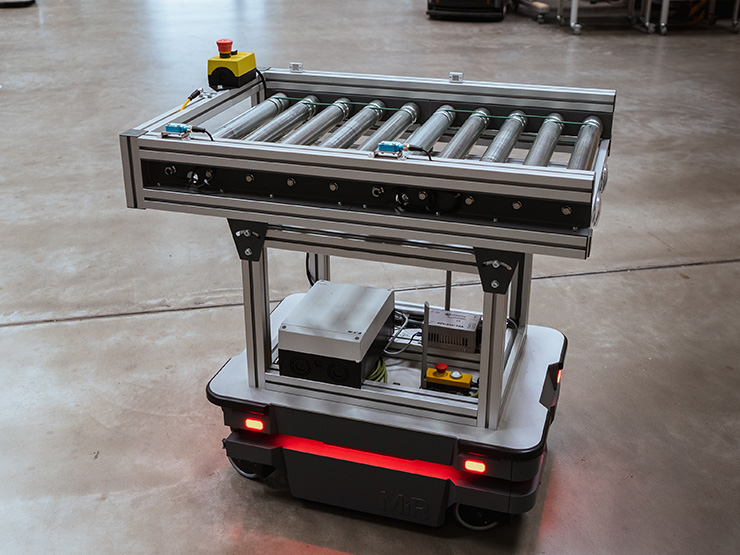
After the successful integration of the MiR 200 in the trade fair model, productive use was now to start. The MiR 250, the successor model to the MiR 200, was purchased for this purpose.
The task was to transport a load carrier (KLT for short) in the form of plastic containers from the goods receiving area to the warehouse in order to relieve the employees who previously had to bring the KLT to the warehouse using transport trolleys. To enable the robot to pick up the KLTs, it was equipped with a roller conveyor from the MiniTec modular system. The integration into the warehouse was very simple, as it had already been partially automated by means of conveyor technology for some time. The existing conveyor technology therefore only had to be supplemented by a transfer point at which the AGV can transfer the KLT.
In the goods receiving area, the transport trolleys were also replaced by a short automated roller conveyor, which serves as a KLT buffer as well as a loading point for the AGV. Due to the already integrated interfaces of the MiR 250, the robot could be integrated into the existing systems and put into operation by our "Automation" department without any major problems.
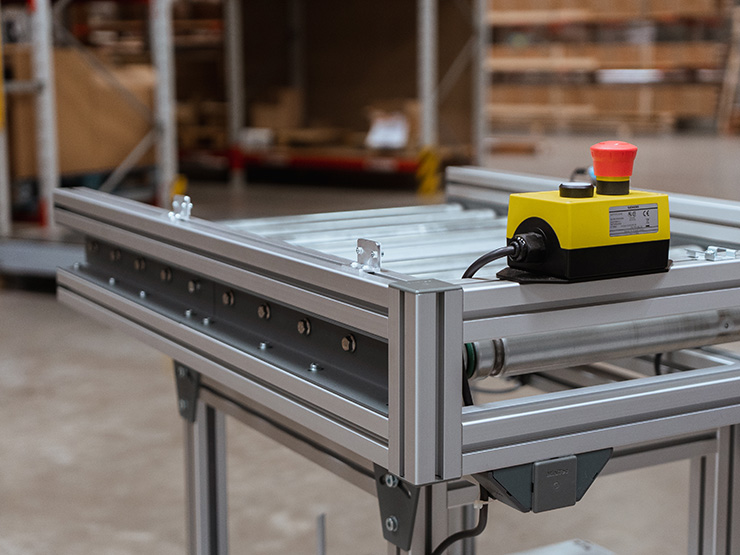
The biggest and therefore most important advantage of using driverless transport systems for MiniTec is that employees now have time for more important tasks and are relieved in the right places. After all, no value is added during the transport of goods, only costs are incurred. Therefore, the automation of this process was an important measure in the context of continuous improvement. Items can now be transported to the warehouse without gaps after the incoming goods inspection, which leads to a great time saving in our transport chain.
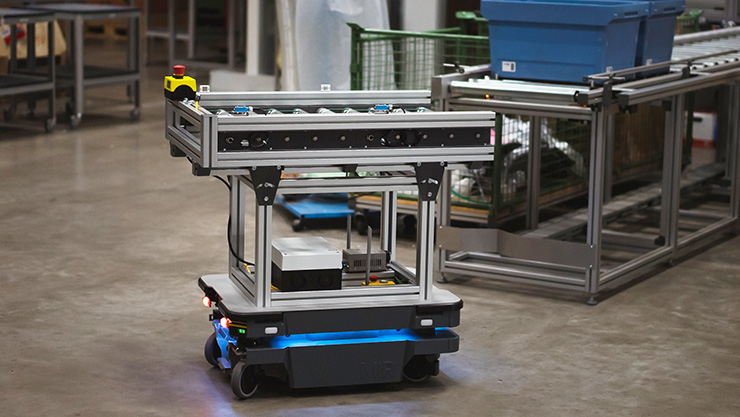
Another significant advantage is the flexible design of the robot with the aluminium profile system. Due to the individual design, the AGV can be adapted to all conveyor systems used - such as the RMS roller mounting system used in the warehouse.
In this way, the AMR integrates itself into the processes as a kind of flexible conveyor technology and represents a link between the fixed conveyor systems. Possible adaptations to changing conditions can be easily implemented at any time. The built-in sensor technology even makes it possible for the robot to independently open gates that it has to overcome on its way to the destination point. This makes the use of the AMR even more useful for us.
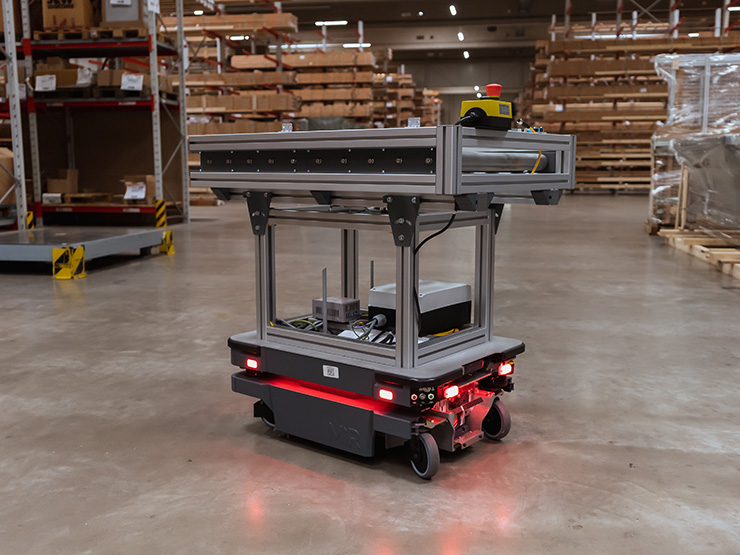
It has been shown that AMR in combination with fixed conveyor systems offers many advantages for companies and represents a very efficient and modern type of conveyor technology. Due to the possibility of individual superstructures with the MiniTec aluminium profile system, the MiR robots are constantly adaptable to the conditions and thus highly flexible.
For MiniTec, the ideal solution does not consist of conveyor technology or the use of AMR, but of a well thought-out interaction of both technologies. In the future, too, internal processes will be examined and further optimised at sensible points through the use of AMR.
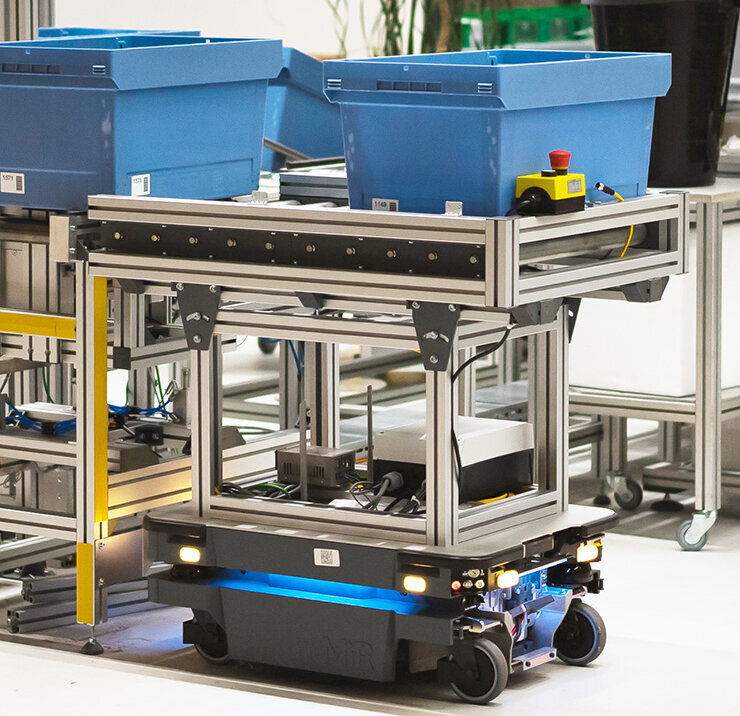
Do you have any further questions about the automated guided vehicle system?